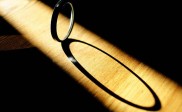How To Take Great Concert Photographs
Concert photography
Taking a great concert photographs is not so difficult. If you like live music and photography you’ll find that those two blend perfectly in the form of concert photography. It is one of the most difficult types of photography, but it is also one of the most rewarding ones. Photographing at concerts will give you the opportunity to capture the visual side of the live music act, and sometimes it’s almost as great as the music itself; many great bands make an impressive show while on stage. More than this, you can capture what the artist is transmitting and what the audience is feeling. A concert of a big band brings thousands of people and among them will be many who would like to see photographs of the event they attended. This means that your photographs could have a great exposure to a large group of people.
If you want to start with concert photography you should know the difficulties that you may encounter and how to overcome them to succeed in taking great shots at concerts.
Among the first things you must think of is how to get access to the concert venue with your camera. Although there are some venues where there are no restrictions and you can bring your DSLR with you; most big concerts that take place in large venues won’t allow entry with such a camera. If this is the case, you can try and obtain a photo pass from the event management. A photo pass is usually given by the event management to newspapers and magazines, and in the last few years they also started giving them to online news sites and online magazines. You can start by contacting a local newspaper or even an online magazine that you think would be interested in covering the event you want to attend and convince them to assign you as a photographer for that concert. You may be required to show a portfolio before you get the assignment and for this, a good place to start is small venues or clubs where you don’t have restrictions to photograph, you can then use those shots to build a portfolio with concert photographs. If you get assigned and obtain a photo pass, this also means you will attend the event for free and if you like to attend a lot of concerts, this will also save you a lot of money in the long term.
Even if you get a photo pass and get access in front of the stage, or not, you will encounter a lot of difficulties as with any low light environment.
Here are some of them and some tips to overcome them.
– Poor light. Usually the stage where the artists are located is dark and illuminated by spot lights that flash relatively randomly and could be a problem for any photographer. The low light and the smoke on stage will give you an interesting perspective on the artist and you could take some amazing shots if you have the proper position for the shot and the appropriate camera and lens. More on this in the gear section below.
– Constant moving on the stage. Artists tend to move a lot during their shows and this could lead to blurry pictures. One way to overcome this is to use lenses that are fast and have an aperture that can be opened wide so that you can shoot at high speeds but also have enough light in your camera. A camera with a high ISO would also help.
– The stage itself. At some large venues the size of the stage will also be quite large and this could be a problem if you want to try and get shots with more than one member of the band, or even with the whole band. For this you would need lenses with a wide angle but you should also take into consideration that you will have to increase the depth of field to keep all the band members in focus, especially if you’re shooting from an angled view of the stage. This could be done by closing the aperture a little while keeping the shutter speed the same to avoid blur and at the same time you will have to increase the ISO to compensate for less light that enters the camera.
– The crowd. Although the crowd can be an interesting thing to photograph at a concert, it can also be a problem if you want to move through different areas of the venue. You’ll have to be polite an try not to block other people’s view for a long time while you take the photos. Also try not to use flash as this will distract and annoy people around you and those on stage. Some venues forbid the use of flash; it usually gives you unnatural photos because you won’t be able to capture the interesting light on stage if you use flash.
How to take great concert photographs.
Choose the right gear. After understanding the requirements and the difficulties you may encounter when taking photographs at a concert, you should get the appropriate gear. Whether you photograph at a concert that takes place in a large venue or in a small club, you must have a camera that can be used to shoot at a high ISO without loosing too much quality. If the camera shoots at ISO 800 or 1600 which is good enough, it could be the right choice. Usually the camera’s last two high ISO values are unusable so don’t think that if your camera has it’s highest ISO 3200 it would be ok to shoot at ISO 1600 because more than likely it will produce noisy photos. It’s best to test a camera before you buy it if you can, or look for photographs taken with that camera at high ISO on websites such as Flikr. You can find all sorts of details about a photograph there, just look for the specific model of camera and you’ll get an idea of what it can do.
Of course you have to take in to account the lenses too. These might be the most important part of the gear. In a low light environment such as a concert venue you will need all the light you can get so look for lenses that have a wide aperture f/1.4 – 2.8. These lenses can get quite expensive, especially if you look for telephoto lenses such as 70-200mm f/2.8, which is essential if you are serious about concert photography. If you are just starting then a good option for a lens that has a wide aperture would be the prime lenses such as 50mm f/1.4 or, even cheaper, the 50mm f/1.8, this is the cheapest option available.
Get good positioning. If it’s possible, get in front of the stage, you’ll usually need a photo pass for that but if this is not a possibility try and get a position where you’ll have the whole stage in sight and not many people in front of you.
Get the exposure right. You will find it a little tricky because at concerts the light from the stage is constantly changing and you’ll have to do quite a few to get it right. Just try and concentrate on the people on stage and don’t get too distracted by the flashing light from the stage. An important thing is to try not to check your images too often on the camera’s screen because you might miss important things on the stage. It’s better to pay attention to what the members of the band are doing on stage and capture the interesting moments.
Look for interesting things that will help you make a better composition. An interesting light on the artist or on the instruments can create a unique image. Also the smoke on the stage combined with the fuzzy light can provide you with some unique perspectives.
Gear guide for concert photography.
There are a lot of options for a good kit that may be used for concert photography. You should take into consideration some of the following:
– Camera body. A camera with a good image quality is necessary. Nikon D90 or D300 are some starting options but other manufacturers like Canon, have good options in the same price range. It is necessary that the camera’s ISO values be decent enough to be used for low light situations.
– Lenses. For concert photography, aperture is very important. The wider the better, somewhere between f/1.4 and f/2.8 would be ideal. You should try and get lenses for wide angle and for zoom too. Some of the options would be: 24-70mm, this is quite versatile as it has a medium zoom but also a wide angle. Next you could use prime lenses like the 50mm which offers great quality at a lower price, but you will not be able to zoom and you will need to get a good position or to be able to move a lot. Next, a good option is the 70-200mm lenses, they offer great zoom, but you’ll have to get ones with a wide aperture, like f/2.8 which are expensive.
– Flash. You should not use flash if possible but if you have to, then get an external flash that can be rotated so that the light from it flashes around you, not directly on the artist, don’t use the one built in the camera as its light isn’t so natural.
Concert photography is a great experience and with some practice you may get some great moments captured on your camera.
Below are some examples of concert photography.

Photo By Pétur Gauti

Photo By Jazz93

Photo By marfis75
You may want to take a look at Common Mistakes in Concert Photography





Nice article.
very informative article !!!! thank you for the share !!!
Thanks! I am glad that you liked it!